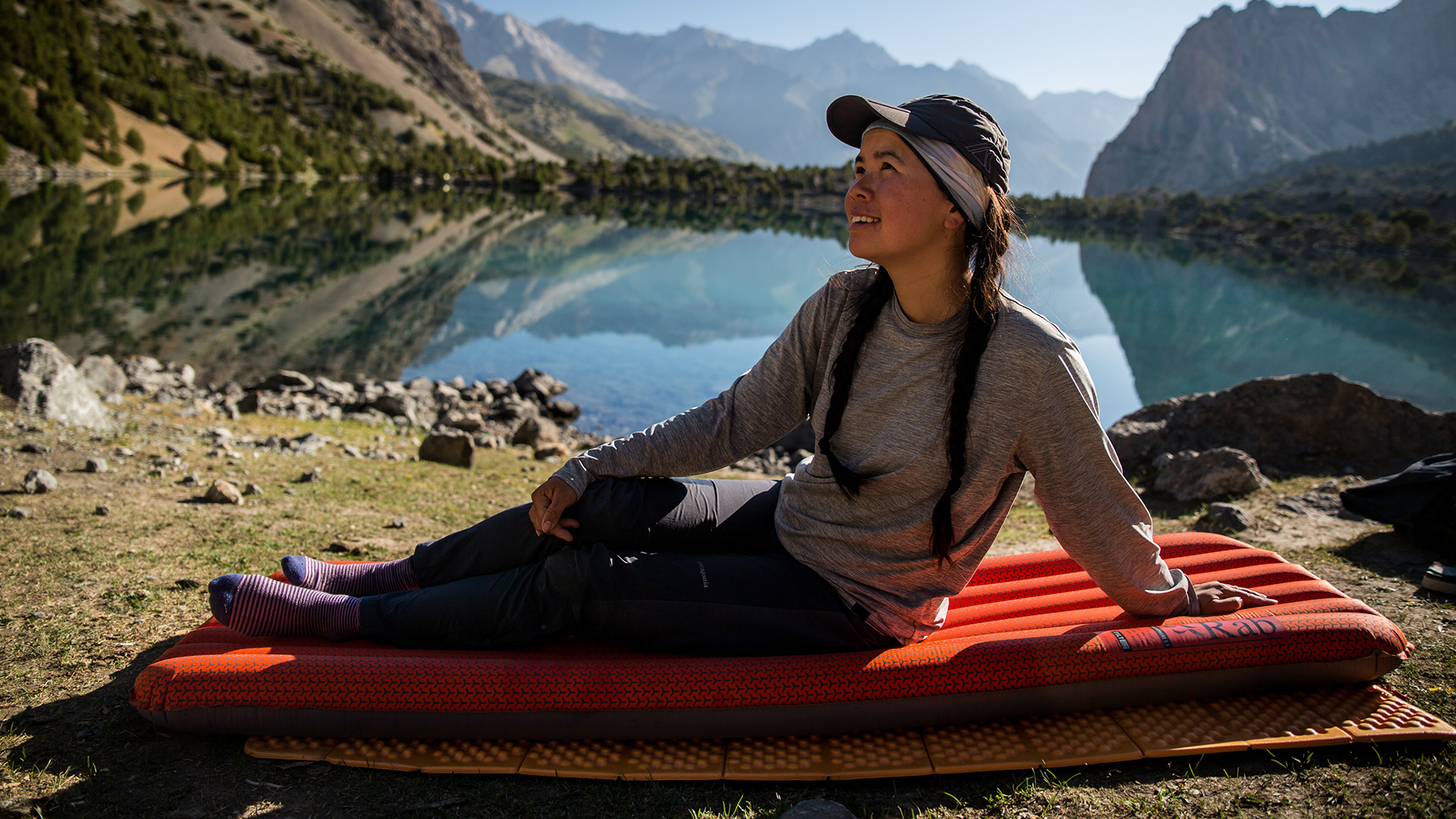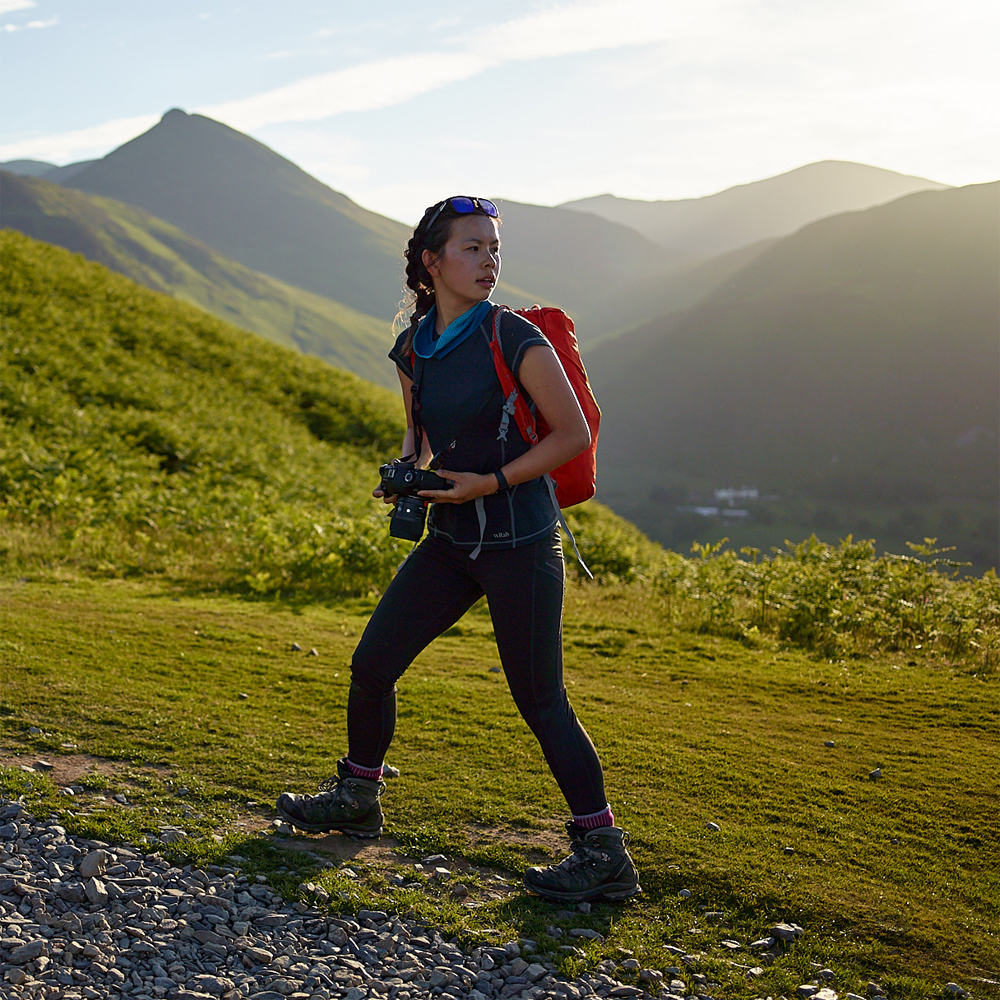Advnture Verdict
Tested on the alpine slopes of Tajikistan at an altitude of 4,000 meters, the Rab Ionosphere 5.5 Sleep Mat is a workhorse of a mat with a high R-value and an impressive warmth-to-weight ratio. When it comes to comfort, sleeping pads are one of the most critical pieces of kit you own as a mountaineer, so having a setup that works makes a big difference to being able to commit to the adventures ahead. I’d really recommend trying the Rab Ionosphere 5.5 Sleep Mat as an essential part of your expedition/trekking sleep setup.
Pros
- +
Really comfortable
- +
Easy to deflate
- +
Warm
Cons
- -
Stuff sack is a bit awkward when in a rush
- -
Pack can be bulky if not rolled properly
You can trust Advnture
Meet the reviewer
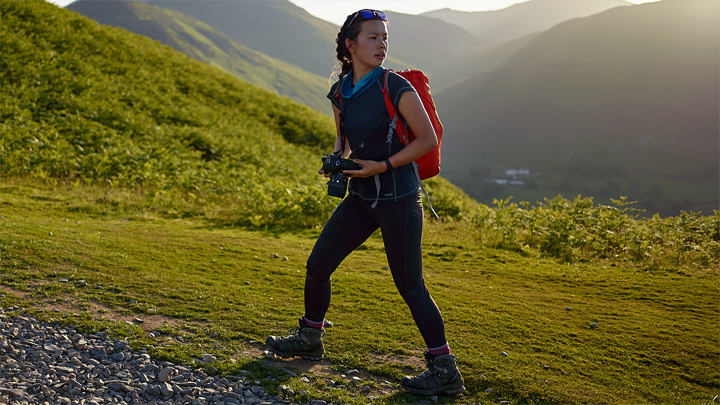
A former brand ambassador for Merrell and current Ordnance Survey #GetOutside Champion, Jessie Leong’s lifelong outdoor odyssey began with Duke of Edinburgh’s Award walks in the Peak District. This segued into long hill hikes in the Yorkshire Dales, multi-day treks in the Lake District, scrambles in North Wales and adventures scaling alpine pinnacles.
Rab Ionosphere 5.5 Sleep Mat: first impressions
For someone 5’5” tall (or long if you’re lying down), the Rab Ionosphere 5.5 Sleep Mat is the gold star of sleeping pads. Aimed at those who don’t want to sacrifice the comfort of a reassuring night’s sleep, but are also fussy enough that they don’t want to carry an enormously thick and heavy old-school foam mat, it’s crammed with technology for the discerning mountaineer who wants it all.
• List price: $210 (US) / £190 (UK)
• Weight: 690g / 24.3oz (Regular); 950g / 33.5oz (Long Wide)
• Actual size: 183 x 51cm / 72 x 20in (Regular); 196 x 64cm / 77 x 25in (Long Wide)
• Packed size: 24 x 12cm / 9.4 x 4.7in (Regular); 30 x 14cm / 11.8 x 5.5in (Long Wide)
• R-value: 5.5
• Color: Firecracker
• Compatibility: Trekking, expedition, mountaineering
Squashing down to a surprisingly snug packed size, the Ionosphere inflates to a reassuringly thick and plush 8cm / 3in. It’s not so shiny that it feels like a jazzy lilo, nor is it so heavy with foam and insulating materials that it becomes difficult to roll. Rather, it’s a clever insulated sleeping mat that traps air and reduces heat loss from convective currents, while the nifty TILT reflective film helps reduce radiant heat loss meaning no sudden drops in temperature.
Rab Ionosphere 5.5 Sleep Mat: in the field
As a back sleeper, sleeping mat support and overall thickness is a priority for me as I need to ensure I have enough support for my shoulder and seat area without feeling like the mat is going to engulf me. The Rab Ionosphere 5.5 combines some nifty design features, from oversized outer chambers that helped keep me central, to a hexagonal grip pattern that stops the shiny material from slipping down in the night. It’s especially important if you’re affected by the slope of the mountains, and you usually find yourself huddled at the bottom of the tent by the morning.
Using the Rab mat, I was surprised at how much less I moved in the night. It stayed inflated over the whole night and didn’t rapidly deflate due to temperature fluctuations, which can be an issue with other mats.
Comfort is king when it comes to expedition sleeping, and knowing I had a kingly 8cm / 3in of sleeping mat thickness – and a R-value of 5.5 (the max being 6) – meant I felt I could really enjoy my night’s sleep, while my tent partner slept on a much thinner mat that only weighed a fraction less yet looked wafer thin (and cold) by comparison. For those who sleep in different positions, or need to shift their body in the night, it was also nice to sleep on a mat that wasn’t overly squeaky or rustled when I moved on it.
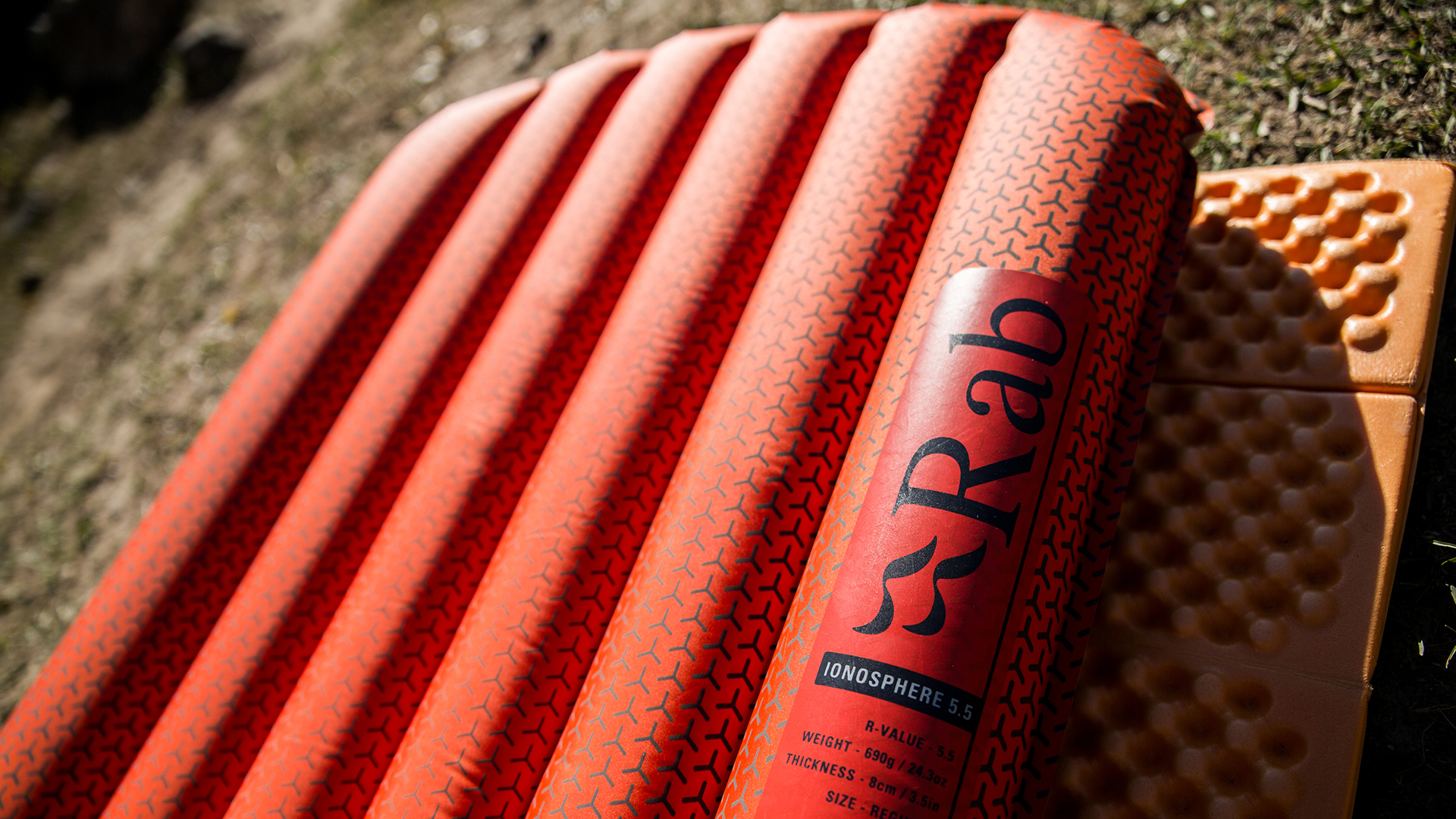
Rab Ionosphere 5.5 Sleep Mat: inflation and deflation
After repeated inflations and deflations, the Rab Ionosphere 5.5 stayed resistant to wear and tear, though just in case it comes with a repair kit tucked neatly in the pouch. It has a self-inflating drybag that can be used to waft air in and, by attaching a valve, it’s simply a case of rolling the drybag and squeezing air to inflate the pad. For those who’ve not used a drybag pump sack before, it’s a much easier way to inflate a sleeping mat, with the added bonus of preventing the intake of moisture that can lead to mold growth in the bag. With a little practice it’s easy to inflate in under two minutes (with 4-5 inflation wafts), getting the sleeping mat firm for a comfortable night’s sleep. Inflatable air pumps such as the ones offered by Flextail also do the job in a nifty 15 seconds, which I carried as a bonus piece of kit that meant my sleeping setup was ready in a flash.
Best of all, deflating the mat was simply a case of a single pull on the low-profile popper on the underside of the mat to let the air out – no complicated or fiddly valves to open or close.
All the latest inspiration, tips and guides to help you plan your next Advnture!
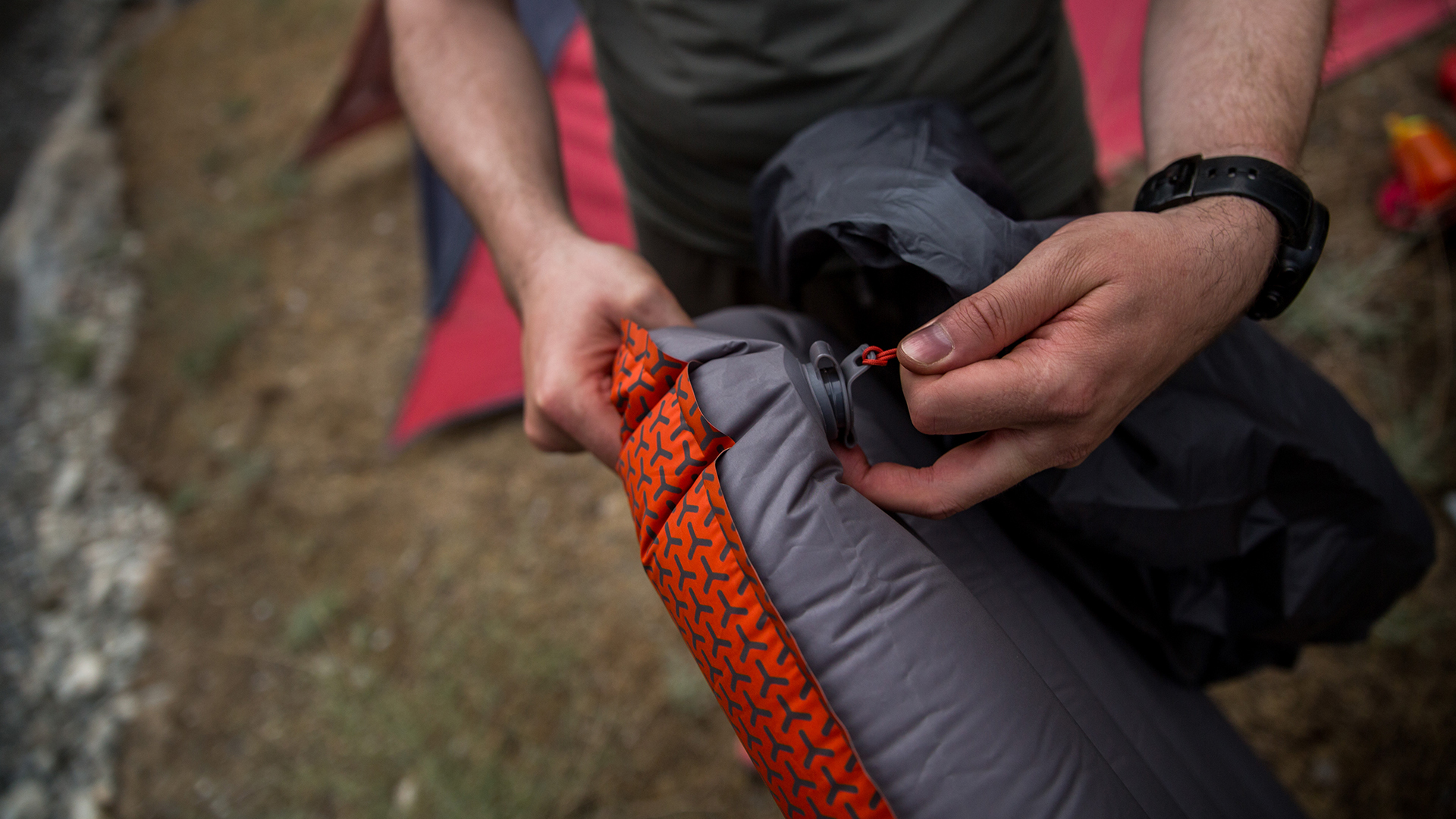
Rab Ionosphere 5.5 Sleep Mat: water resistance
Made out of a tough, 20-denier recycled polyester outer fabric with internal TPU coating and fluorocarbon-free DWR, the Rab Ionosphere Sleep Mat is water resistant and won’t absorb all the accidental splashes from a cup of coffee in your tent, or get damp if the heavens open. It also has TILT reflective film (Thermo Ionic Lining Technology), which works a bit like an emergency blanket, where the heat is reflected back to the body, helping reduce radiant heat loss.
The Rab Ionosphere also uses Stratus R insulation inside the sleeping mat, which – the manufacturer claims – works by trapping air to reduce heat loss from convective currents. Developed with 100% recycled post-consumer material, this system helps to separate the Ionosphere from other sleeping mats as it offers a lot more warmth without adding too much weight, while drying quickly and keeping you warm even if it’s wet.

Rab Ionosphere 5.5 Sleep Mat: campcraft practicality
It’s worth noting that trying to put the sleeping mat back into its pouch, which uses an elasticated side opening, is a bit fiddly to get right. Trying to squeeze all the air out and fold it so it fits perfectly is hard to do in a wild setting and rough terrain isn’t the best place to get the perfect roll – but it did eventually go in. A simpler bag with a drawstring opening would have been my preference, as ease of packing away is key for fast and light adventures. The current stow away with two orange elasticated bands attached to the cover is a bit fiddly to use, and stops the verdict being a solid five stars.
A former brand ambassador for Merrell and current Ordnance Survey #GetOutside Champion, Jessie Leong’s lifelong outdoor odyssey began with Duke of Edinburgh’s Award walks in the Peak District. This segued into long hill hikes in the Yorkshire Dales, multi-day treks in the Lake District, scrambles in North Wales and adventures scaling alpine pinnacles. When not walking, she can be found rock climbing, wild swimming, cycling, photographing, filmmaking, writing and modelling. Jessie’s most recent claim to fame is playing a Miss World contestant in the 2020 feature film Misbehaviour.
